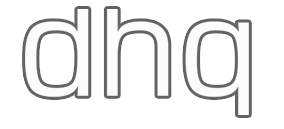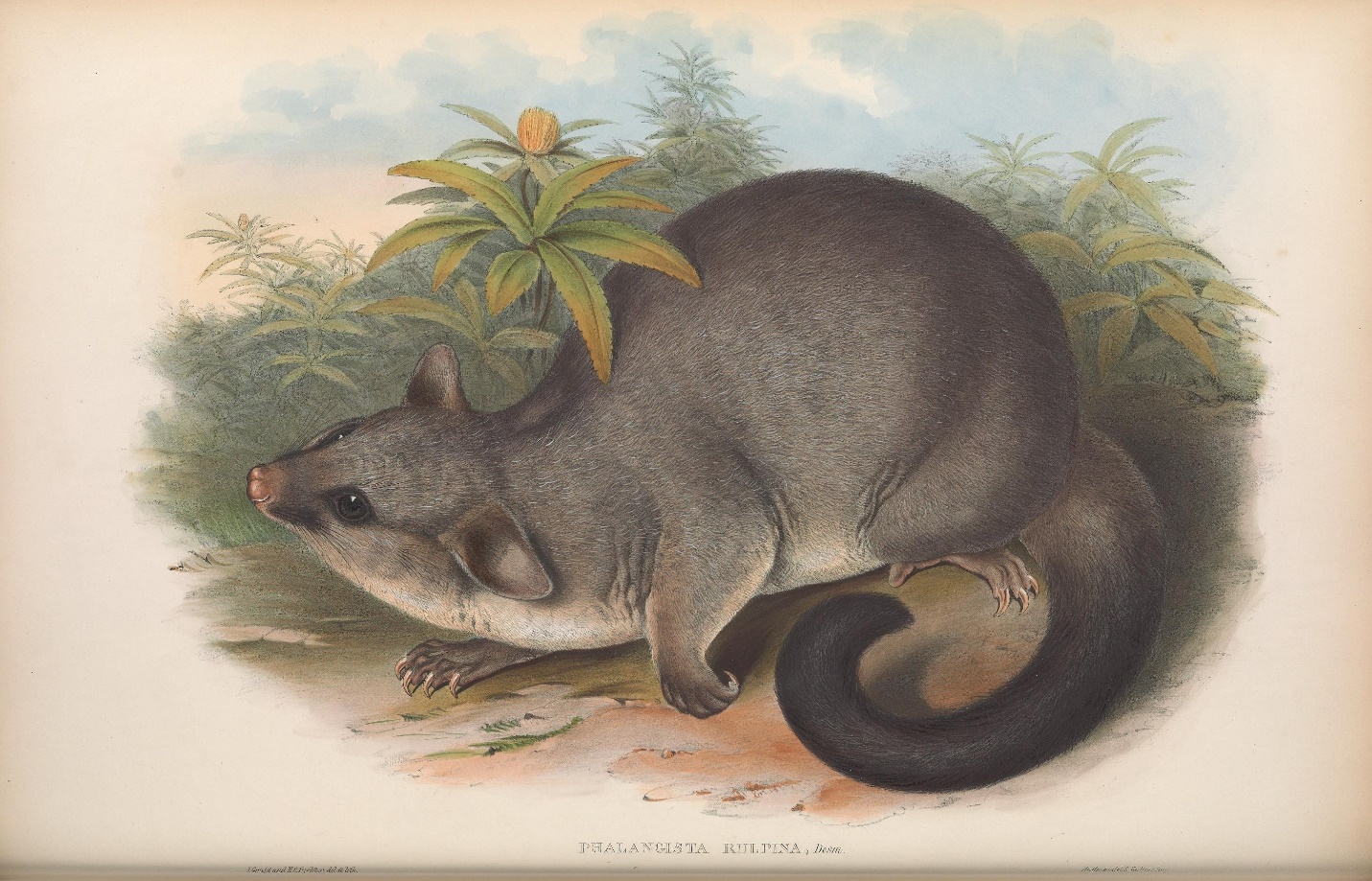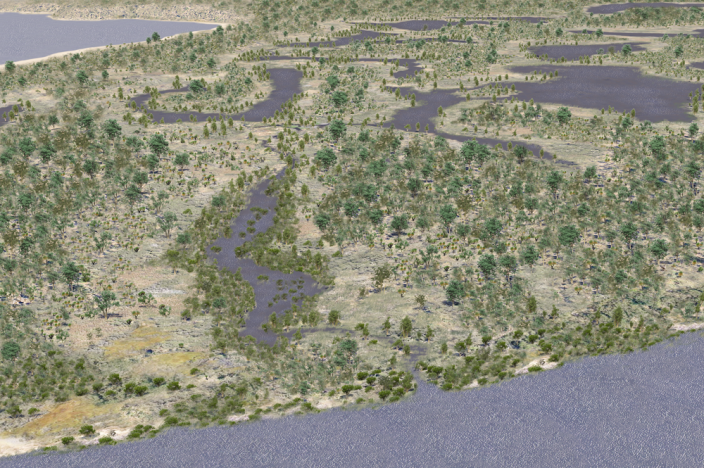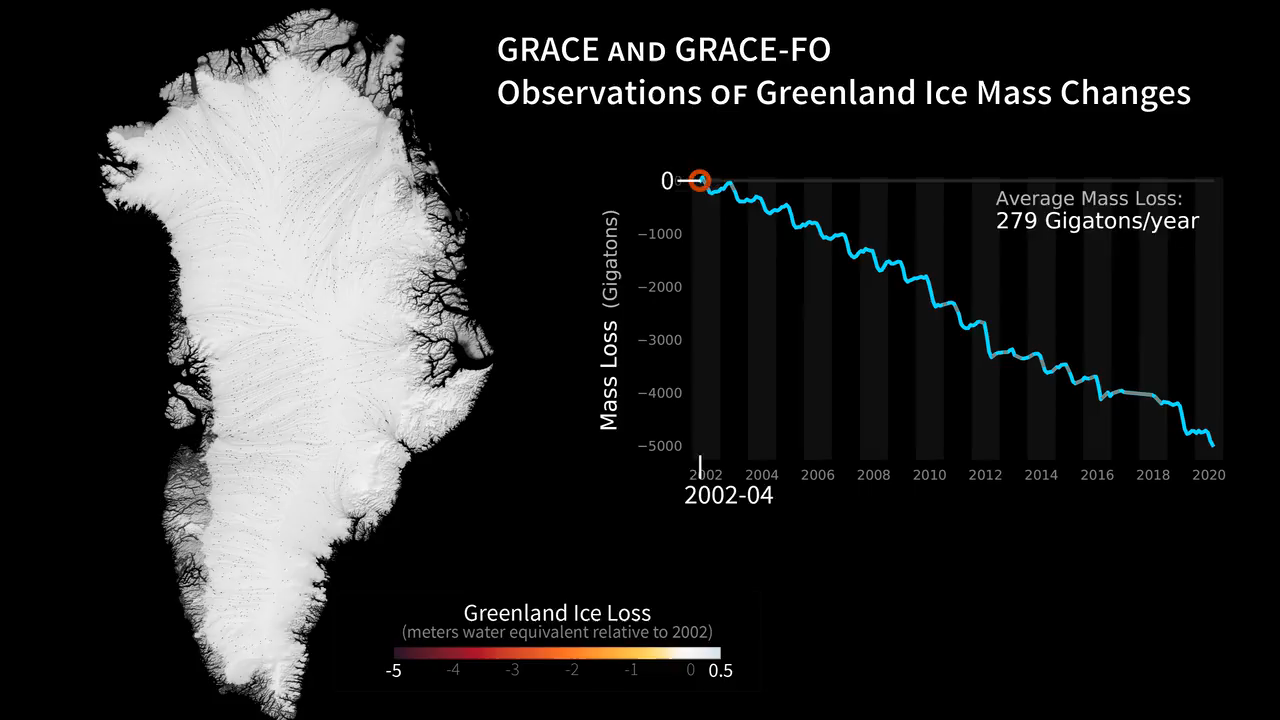Works Cited
Adamson 2017 Adamson, J. (2017) “Gathering the Desert in an Urban Lab: Designing the
Citizen Humanities”, in J. Adamson and M. Davis (eds) Humanities for the Environment: Integrating Knowledge,
Forging New Constellations of Practice. Routledge, New York,
pp. 106–119.
Adamson, LeMenager, and Sandilands 2018 Adamson, J., LeMenager, S. and Sandilands, C. (2018) “Citizen Humanities: Teaching Life Overlooked as Interdisciplinary
Ecology”, Resilience: A Journal of the
Environmental Humanities, 5(2), pp. 96–121.
Ahern 2019 Ahern, S. (2019) “Introduction: A Feel For the Text”, in S. Ahern
(ed.) Affect Theory and Literary Critical Practice: A
Feel For the Text. Cham, Switzerland: Springer Nature, pp.
1–21.
Andro 2018 Andro, M. (2018) Digital Libraries and Crowdsourcing. Hoboken,
NJ: Wiley.
Balick and Cox 2020 Balick, M.J. and Cox,
P.A.P. (2020) People, and Culture: The Science of
Ethnobotany. 2nd edn. Boca Raton, FL: CRC Press.
Barad 2007 Barad, K. (2007) Meeting the Universe Halfway: Quantum Physics and the
Entanglement of Matter and Meaning. Durham, NC: Duke
University Press.
Belbin et al 2021 Belbin, L. et al.
(2021) “The Atlas of Living Australia: History, Current
State and Future Directions”,
Biodiversity
Data Journal, 9(e65023), pp. 1-35,. Available at:
https://doi.org/10.3897/BDJ.9.e65023.
Bjornerud 2018 Bjornerud, M. (2018) Timefulness: How Thinking Like a Geologist Can Help
Save the World. Princeton, NJ: Princeton University
Press.
Bladow and Ladino 2018 Bladow, K. and
Ladino, J.K. (2018) “Toward an Affective Ecocriticism:
Placing Feeling in the Anthropocene”, in K. Bladow and J.K.
Ladino (eds) Affective Ecocriticism: Emotion,
Embodiment, Environment. Lincoln, NE: University of Nebraska
Press, pp. 1–22.
Bridgewater and Rotherham 2019 Bridgewater, P. and Rotherham, I.D. (2019) “A Critical
Perspective on the Concept of Biocultural Diversity and Its Emerging
Role in Nature and Heritage Conservation”,
People and Nature, 1(3), pp. 291-304,. Available at:
https://doi.org/10.1002/pan3.10040.
Bromham et al 2021 Bromham, L. et al.
(2021) “Global Predictors of Language Endangerment and
the Future of Linguistic Diversity”,
Nature Ecology and Evolution, December 16. Available at:
https://doi.org/10.1038/s41559-021-01604-y.
Ceballos, Ehrlich, and Raven 2020 Ceballos, G., Ehrlich, P.R. and Raven, P.H. (2020) “Vertebrates on the Brink as Indicators of Biological Annihilation and
the Sixth Mass Extinction”,
PNAS:
Proceedings of the National Academy of Sciences of the United
States, 117(24). Available at:
https://doi.org/10.1073/pnas.1922686117.
Chang 2021 Chang, A.Y. (2021) “Pitching the ‘Big Tent’ Outside: An Argument for
the Digital Environmental Humanities”, in D. Kim and A. Koh
(eds) Alternative Historiographies of the Digital
Humanities. Goleta, CA: Punctum Books, pp. 377–397.
Christen 2019 Christen, K. (2019) “‘The Songline Is Alive in Mukurtu’: Return, Reuse,
and Respect”. Edited by L. Barwick, J. Green, and P.
Vaarzon-Morel. Archival Returns: Central Australia and
Beyond. Honolulu, HI: University of Hawai'i Press.
Cohen and LeMenager 2016 Cohen, J.J. and
LeMenager, S. (2016) “Introduction: Assembling the
Ecological Digital Humanities”, PMLA, 131(2), pp. 340–346.
Coulter, Hardenberg, and Jørgensen 2021(a) Coulter, K., Hardenberg, W.G. and Jørgensen,
F.A. (2021) “An Experiment in Collecting and
Curating”, in K. Coulter et al. (eds) Ant
Spider Bee: Chronicling Digital Transformations in Environmental
Humanities. Munich: Center for Environment & Society, pp.
226–229.
Coulter, Hardenberg, and Jørgensen 2021(b) Coulter, K., Hardenberg, W.G. and Jørgensen,
F.A. (eds) (2021) Ant Spider Bee: Chronicling Digital Transformations in
Environmental Humanities, Spider & Cloud /. Munich: Rachel Carson
Center for Environment & Society.
Coulter, Hardenberg, and Jørgensen 2021(c) Coulter, K., Hardenberg, W.G. and Jørgensen,
F.A. (2021) “Preface”, in K. Coulter et al.
(eds) Ant Spider Bee: Chronicling Digital
Transformations in Environmental Humanities. Munich: Center
for Environment & Society, pp. 9–12.
Cubitt 2017 Cubitt, S. (2017) Finite Media: Environmental Implications of Digital
Technologies. Durham, NC: Duke University Press.
Cummings, Roh, and Callaway 2020 Cummings, R., Roh, D.S. and Callaway, E. (2020) “Organic and Locally Sourced: Growing a Digital Humanities Lab with an
Eye Towards Sustainability”, Digital
Humanities Quarterly, 14(3).
Dawson 2021 Dawson, T. (2021) “The Weight of The Digital: Experiencing Infrastructure
with InfraVU”, in O. Rossier, C. Miya, and G. Rockwell (eds)
Right Research: Modelling Sustainable Research
Practices in the Anthropocene. Cambridge, UK: Open Book
Publishers, pp. 309–327.
Galloway 2017 Galloway, K. (2017) “Making and Learning with Environmental Sound: Maker
Culture, Ecomusicology, and the Digital Humanities in Music History
Pedagogy”, Journal of Music History
Pedagogy, 8(1), pp. 45–71.
Gomez 2019 Gomez, A. (2019) “The Making of the Digital Working Class: Social History,
Digital Humanities, and Its Sources”, in M.K. Gold and L.F.
Klein (eds) Debates in the Digital Humanities.
Minneapolis, MN: University of Minnesota Press, pp. 399–404.
Gorenflo et al 2012 Gorenflo, L.J. et al.
(2012) “Co-occurrence of Linguistic and Biological
Diversity in Biodiversity Hotspots and High Biodiversity Wilderness
Areas”,
PNAS: Proceedings of the National
Academy of Sciences of the United States, 109(21), pp.
8032-8037,. Available at:
https://doi.org/10.1073/pnas.1117511109.
Gould 1863 Gould, J. (1863) “The Mammals of Australia”. John Gould,
London.
Gould 2016 Gould, A.S. (2016) “Restor(y)ing the Ground: Digital Environmental Media
Studies”, Networking Knowledge, 9(5), pp. 1–19.
Griffiths 2007 Griffiths, T. (2007) “The Humanities and an Environmentally Sustainable
Australia”, Australian Humanities
Review, 43.
Haklay 2018 Haklay, M. (2018) “Participatory Citizen Science”, in S. Hecker et
al. (eds) Citizen Science: Innovation in Open
Science. London: Society and Policy, UCL Press, pp.
52–62.
Harway 2016 Haraway, D. (2016) “Tentacular Thinking: Anthropocene, Capitalocene,
Chthulucene”, e-flux Journal,
75.
Hecker et al 2018 Hecker, S. et al.
(2018) “Innovation in Open Science, Society and Policy:
Setting the Agenda for Citizen Science”, in S. Hecker et al.
(eds) Citizen Science: Innovation in Open
Science. London: Society and Policy, UCL Press, pp.
1–23.
Hedges and Dunn 2017 Hedges, M. and Dunn,
S. (2017) Academic Crowdsourcing in the Humanities:
Crowds, Communities and Co-production. Cambridge, UK: Chandos
Publishing.
Heinisch et al 2021 Heinisch, B.,
Oswald, K., Weißpflug, M., Shuttleworth, S., and Belknap, G. (2021) “ Citizen Humanities” in Vohland, K.,
Land-Zandstra, A., Ceccaroni, L., Lemmens, R., Perelló, J., Ponti, M.,
Samson, R. and Wagenknecht, K. (eds) The Science of
Citizen Science. Cham, Switzerland: Springer, 97–118.
Herbaria 3.0 2021(a) Herbaria (2021) “Herbaria 3.0: Everyone Has a Story To Tell About a
Plant, What Is Yours?” Available at:
https://herbaria3.org/.
Huber 2022 Huber, M.T. (2022) Climate Change as Class War: Building Socialism on a
Warming Planet. London: Verso Books.
Hussain and Riede 2020 Hussain, S.T. and
Riede, F. (2020) “Paleoenvironmental Humanities:
Challenges and Prospects of Writing Deep Environmental
Histories”,
WIREs Climate Change,
11(e667), pp. 1-18,. Available at:
https://doi.org/10.1002/wcc.667.
Jørgensen 2014 Jørgensen, F.A. (2014) “The Armchair Traveler”s
Guide to Digital Environmental Humanities’, Environmental Humanities, 4, pp. 95–112.
Ladino 2018 Ladino, J.K. (2018) “What Is Missing? An Affective Digital Environmental
Humanities”, Resilience: A Journal of the
Environmental Humanities, 5(2), pp. 189–211.
Linley 2016 Linley, M. (2016) “Ecological Entanglements of DH”, in M.K. Gold and
L.F. Klein (eds) Debates in the Digital
Humanities. Minneapolis, MN: University of Minnesota Press,
pp. 410–437.
Moerman 1998 Moerman, D.E. (1998) Native American Ethnobotany. Portland, OR:
Timber Press.
Myers 2017 Myers, N. (2017) “From the Anthropocene to the Planthroposcene: Designing
Gardens for Plant/People Involution”,
History and Anthropology, 28(3), pp. 297-301. Available at:
https://doi.org/10.1080/02757206.2017.1289934.
Native American Ethnobotany Database 2021 Native American Ethnobotany Database
(2021) “History”. Available at:
http://naeb.brit.org/about.
Noble 2019 Noble, S.U. (2019) “Toward a Critical Black Digital Humanities”, in
M.K. Gold and L.F. Klein (eds) Debates in the Digital
Humanities. Minneapolis, MN: University of Minnesota, pp.
27–35.
Nowviskie 2015 Nowviskie, B. (2015) “Digital Humanities in the Anthropocene”,
Digital Scholarship in the Humanities, 30, pp.
4-15,. Available at:
https://doi.org/10.1093/llc/fqv015.
Posthumus and Sinclair 2014 Posthumus,
S. and Sinclair, S. (2014) “Reading Environment(s):
Digital Humanities Meets Ecocriticism”.
Green Letters: Studies in Ecocriticism, 18(3) pp. 254–273.
Available at:
https://doi.org/10.1080/14688417.2014.966737.
Posthumus, Sinclair, and Poplawski 2018 Posthumus, S., Sinclair, S. and Poplawski, V.
(2018) “Digital and Environmental Humanities: Strong
Networks, Innovative Tools, Interactive Objects”, Resilience: A Journal of the Environmental
Humanities, 5(2), pp. 156–171.
Risam 2019 Risam, R. (2019) New Digital Worlds: Postcolonial Digital Humanities in
Theory, Praxis, and Pedagogy. Evanston, IL: Northwestern
University Press.
Robinson et al 2018 Robinson, L.D. et
al. (2018) “Ten Principles of Citizen Science”,
in S. Hecker et al. (eds) Citizen Science: Innovation
in Open Science. London: Society and Policy, UCL Press, pp.
27–40.
Ryan 2014(a) Ryan, J.C. (2014) “FloraCultures: The Nature of a Biodiversity Archive for
Plant-Based Cultural Heritage”, Presentation at Digital
Humanities Australasia: Expanding Horizons, University of Western Australia
Conference, March.
Ryan 2014(b) Ryan, J.C. (2014) “Natural Heritage Conservation and Eco-Digital Poiesis: A
Western Australian Example”, Media
International Australia, 153, pp. 88–97.
Ryan 2023 Ryan, J. C. (2023) “Passive Flora? Reconsidering Nature’s Agency through
Human-Plant Studies” in Osterhoudt, S. and Sivaramakrishnan, K.
(eds), Sustaining Natures: An Environmental
Anthropology Reader. Seattle, WA: University of Washington
Press.
Ryan, Brady, and Kueh 2019 Ryan, J. C.,
Brady, D. and Kueh, C. (2019) “Where Fanny Balbuk
Walked: Re-imagining Perth’s Wetlands”, in Ryan, J. C. and
Chen, L. (eds) Australian Wetland Cultures: Swamps and
the Environmental Crisis. Lanham, MD: Lexington Books, pp.
163–174.
Schiebinger 2007 Schiebinger, L. (2007)
Plants and Empire: Colonial Bioprospecting in
the Atlantic World. Cambridge, MA: Harvard University
Press.
Schultes and Reis 1995 Schultes, R.E.
and Reis, S. (eds) (1995) in Ethnobotany: Evolution of
a Discipline. Portland, OR: Dioscorides Press.
Sinclair annd Posthumus 2017 Sinclair,
S. and Posthumus, S. (2017) “Digital? Environmental:
Humanities”, in U.K. Heise, J. Christensen, and M. Niemann
(eds) The Routledge Companion to the Environmental
Humanities. London: Routledge, pp. 369–377.
Smithsonian Institution 2013 Smithsonian
Institution. (2013)
Eruptions, Earthquakes &
Emissions Available at:
https://volcano.si.edu/E3/.
The Clock of the Long Now 2021 The Clock of the
Long Now. (2021) “The Clock of the Long Now”.
Available at:
https://longnow.org/clock/.
The Long Now Foundation 2021(b) The Long
Now Foundation. (2021) “The Long Now
Foundation”. Available at:
https://longnow.org/.
The Rosetta Project 2021(b) The Rosetta
Project. (2021) “The Rosetta Project: A Long Now
Foundation Library of Human Language”. Available at:
https://rosettaproject.org/.
Travis and Holm 2016 Travis, C. and Holm,
P. (2016) “The Digital Environmental Humanities: What
Is It and Why Do We Need It? The NorFish Project and SmartCity
Lifeworlds”, in C. Travis and A. Lünen (eds) The Digital Arts and Humanities: Neogeography, Social
Media and Big Data Integrations and Applications. Cham,
Switzerland: Springer, pp. 108–204.
Tsing et al 2021 Tsing, A.L. et al. (2021)
“Feral Atlas: The More-Than-Human
Anthropocene”. Available at:
https://feralatlas.org.
Zalasiewicz 2015 Zalasiewicz, J. (2019)
“Commentary on the ‘Anthropocene in Chile’
Manifesto”, Environmental
Humanities, 11(2), pp. 498–500.
Zalasiewicz 2017 Zalasiewicz, J. (2015)
“When Did the Anthropocene Begin? A Mid-Twentieth
Century Boundary Level Is Strategically Optimal”,
Quaternary International, 383, pp. 196-203,.
Available at:
https://doi.org/10.1016/j.quaint.2014.11.045.
Zalasiewicz 2019 Zalasiewicz, J. (2017)
“The Extraordinary Strata of the
Anthropocene”, in S. Oppermann and S. Iovino (eds) Environmental Humanities: Voices from the
Anthropocene. London: Rowman & Littlefield, pp.
115–131.
Zalasiewicz et al 2019 Zalasiewicz,
J. et al. (eds) (2019) The Anthropocene as a
Geological Time Unit: A Guide to the Scientific Evidence and Current
Debate. Cambridge, UK: Cambridge University Press.








